PAYETTE’s Young Designers Core embarked on another hands-on tour of the recently opened New Science Center at Amherst College. Bright and early on a clear December morning, our group traveled through the scenic hills and landscape of Western Massachusetts until we arrived at the historic campus.
Walking up to the New Science Center, I immediately noticed how subtle the building appears from the sloping hillside surrounding it. The building, comprised of four levels, strategically anchors its bulk volume to the lower side of the hill while extending three pavilions westward into the hills of the landscape. This hides one to two levels of the building from most vantage points, creating a comfortable sense of scale among the existing campus.
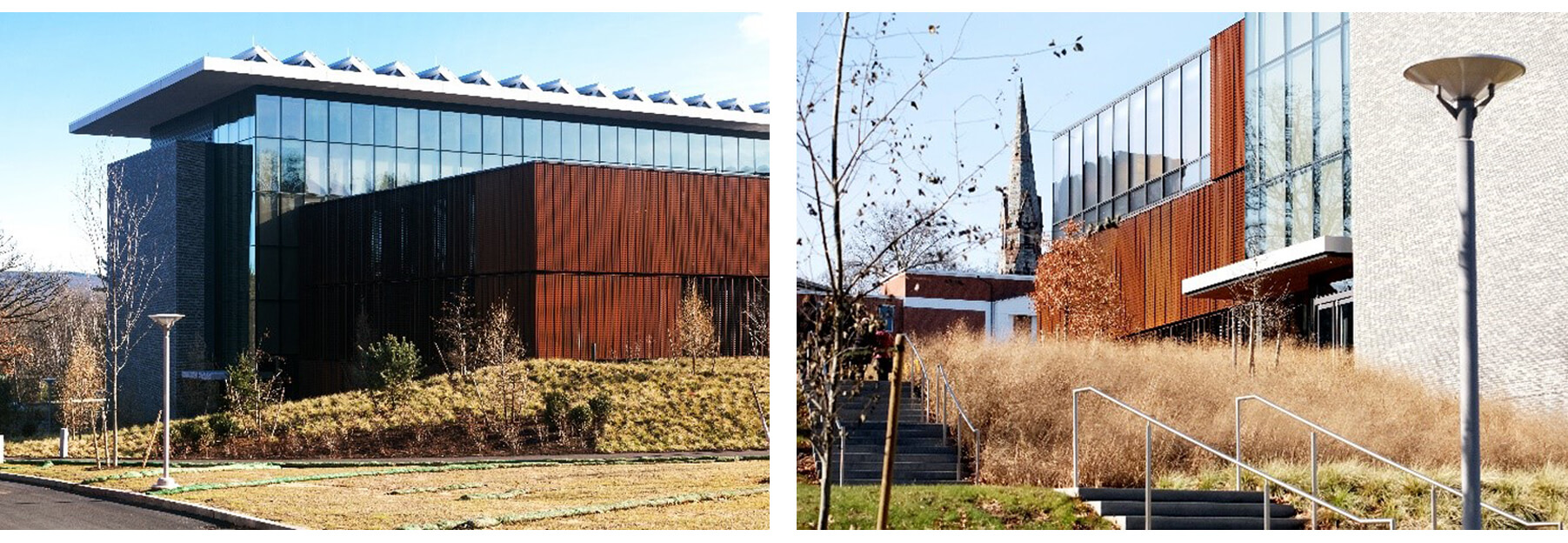
Upon making our way inside the New Science Center we began with an in-depth exploration of the interior programming. The programming is organized around a central commons that runs the length of the building providing students with ample study and gathering zones on every floor, many of which were already occupied upon our arrival! There was no shortage of natural light during the tour as the commons connects through triple height atriums of curtainwall that overlook the campus.
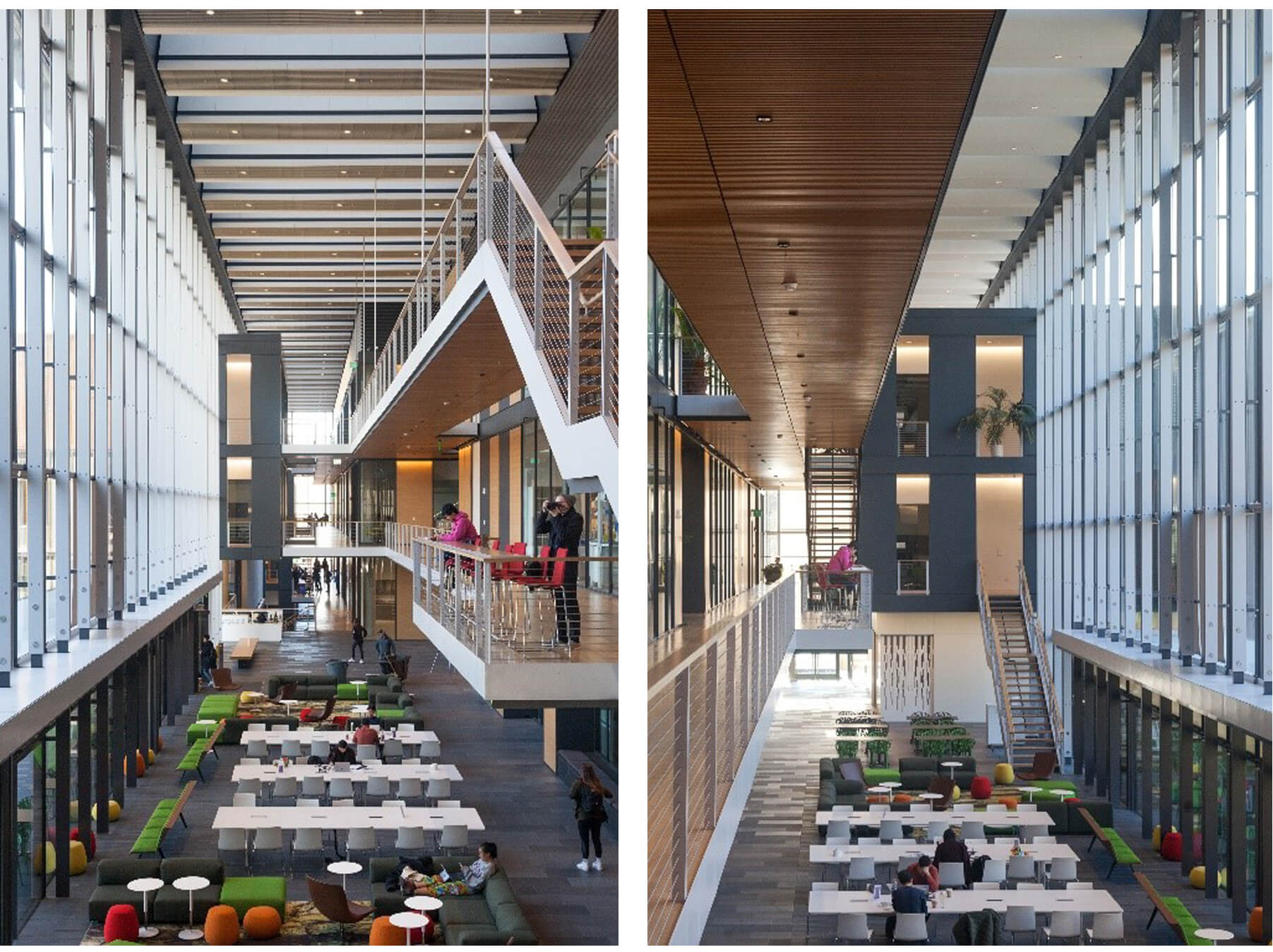
The verticality of the atrium directed my view up to a beautifully sculpted ceiling where reveals of diffused light peak through skylights within the roof canopy. The multi-featured system provides additional natural light, ambient light, acoustic absorption and radiant heating and cooling; all while being capped externally by photovoltaic panels. This high performance roof canopy is a prime example of incorporating integrated building systems within a project.
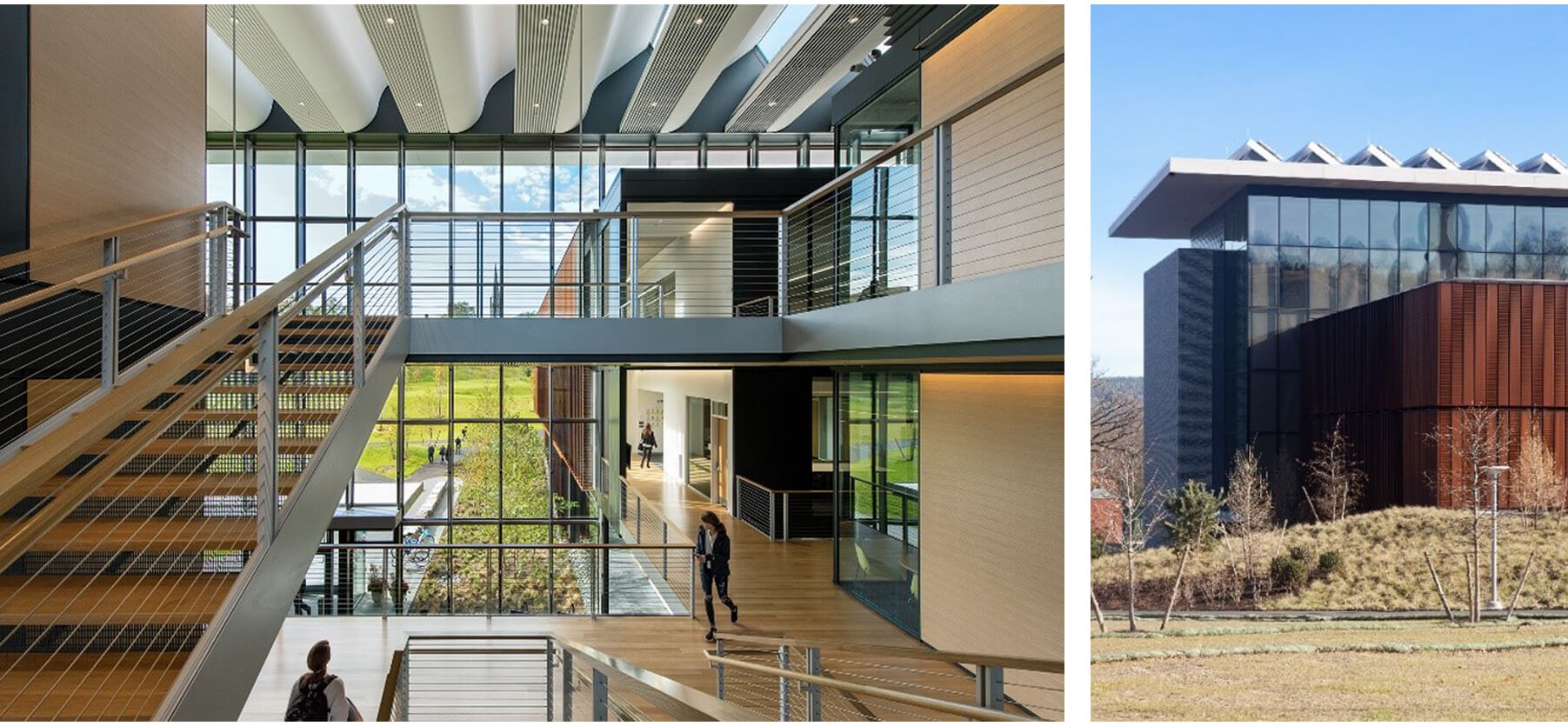
While inside, every vantage point allowed views to the exterior, which we learned was a key component of the design – bringing transparency into the building and welcoming anyone from the campus to come inside. This transparency allows beautiful views out to the campus while simultaneously providing open views inside and through the labs where science is on display.
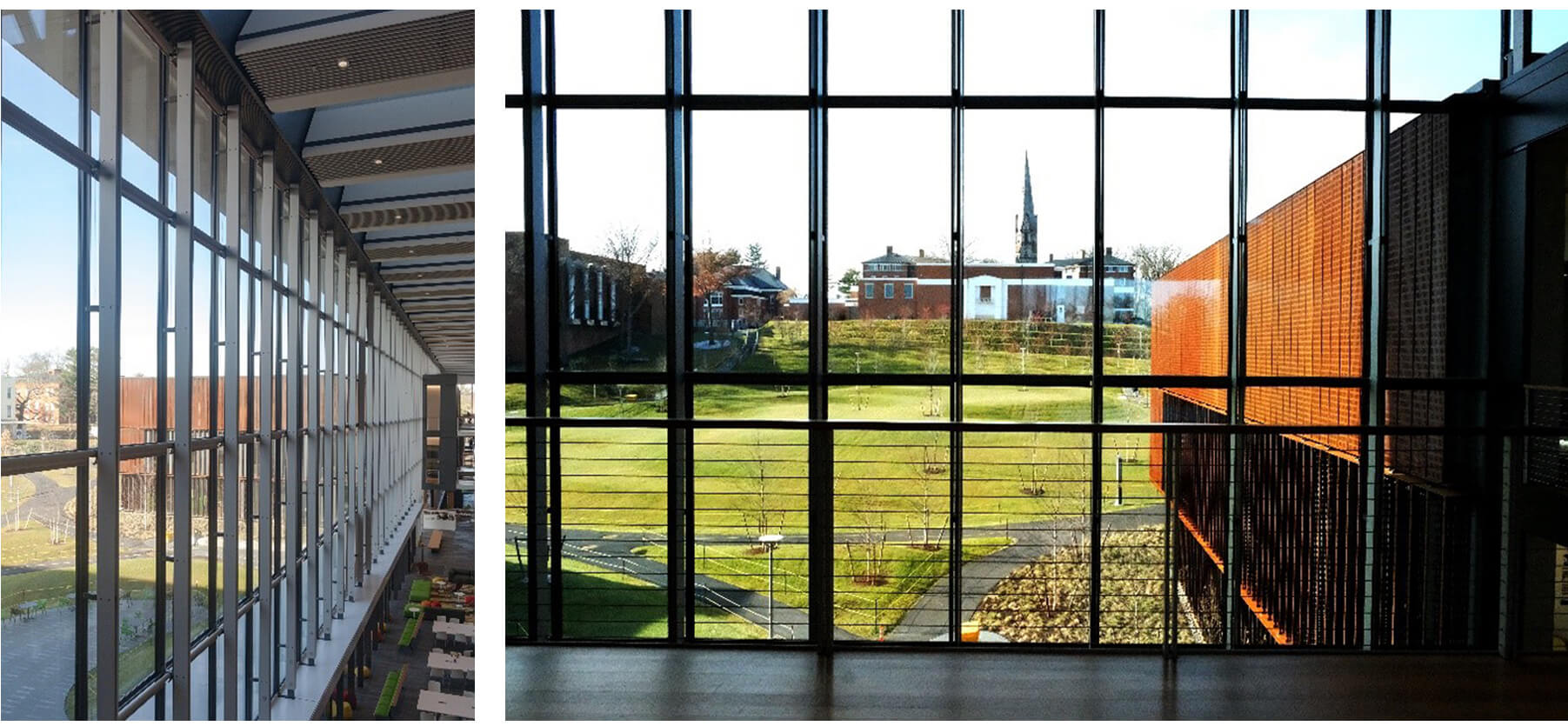
The tour wound down with a lap around the exterior where the intricate weathered steel screens of the pavilions extend out towards the campus green. These screens provide sun shading and privacy to the faculty offices inside while giving a unique texture to the building. These pre-weathered panels provide a color palette similar to the traditional brick used on the campus and will continue to age gracefully through the building’s lifetime.
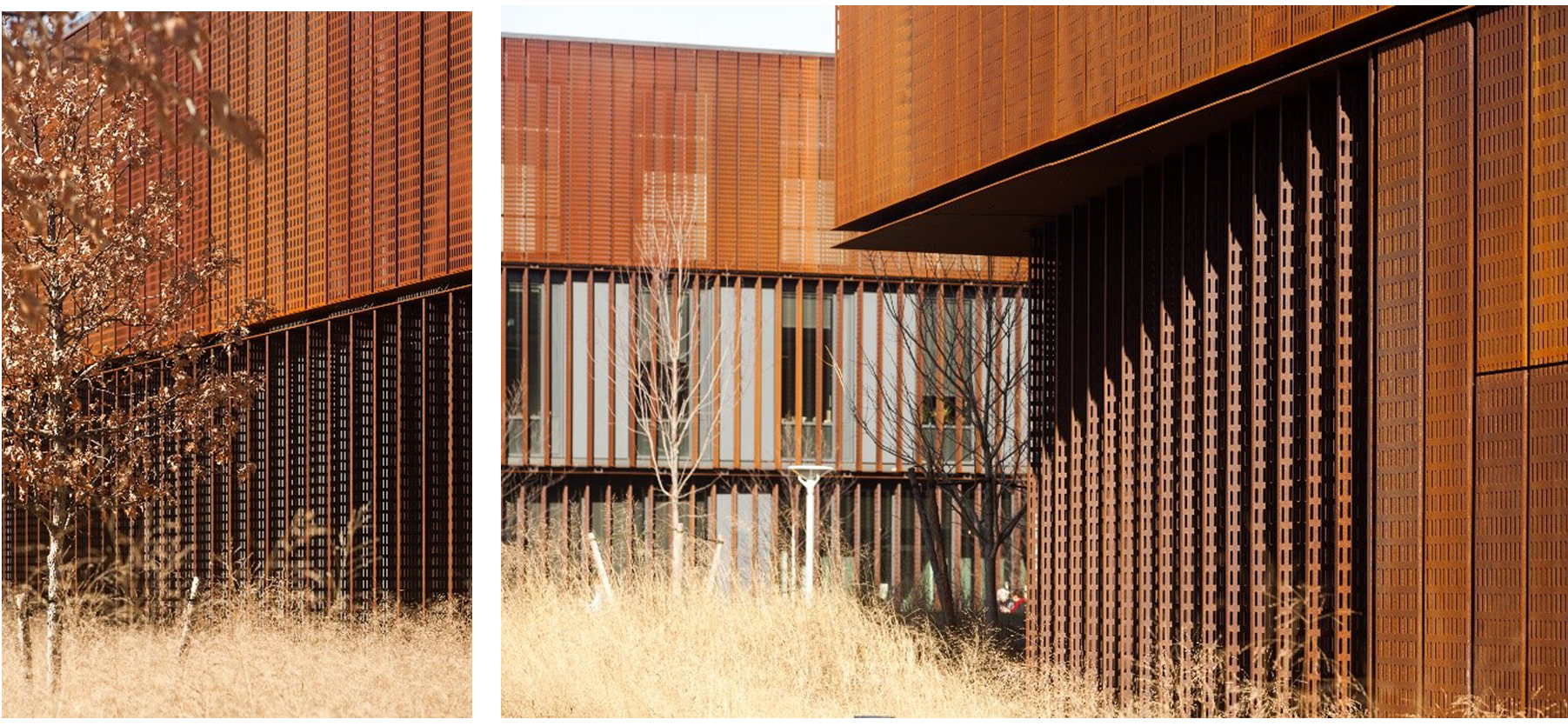
It was clear that the New Science Center opens a new chapter for Amherst College’s future that places science, community and adaptive learning environments at the forefront of the college’s initiates. I’m excited to see how the New Science Center opens doors for future research and discovery at Amherst College.

